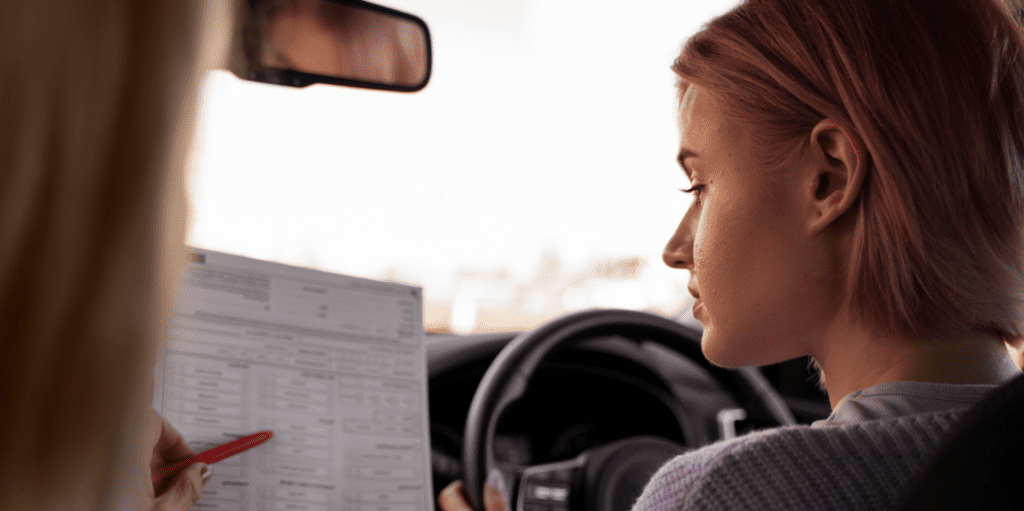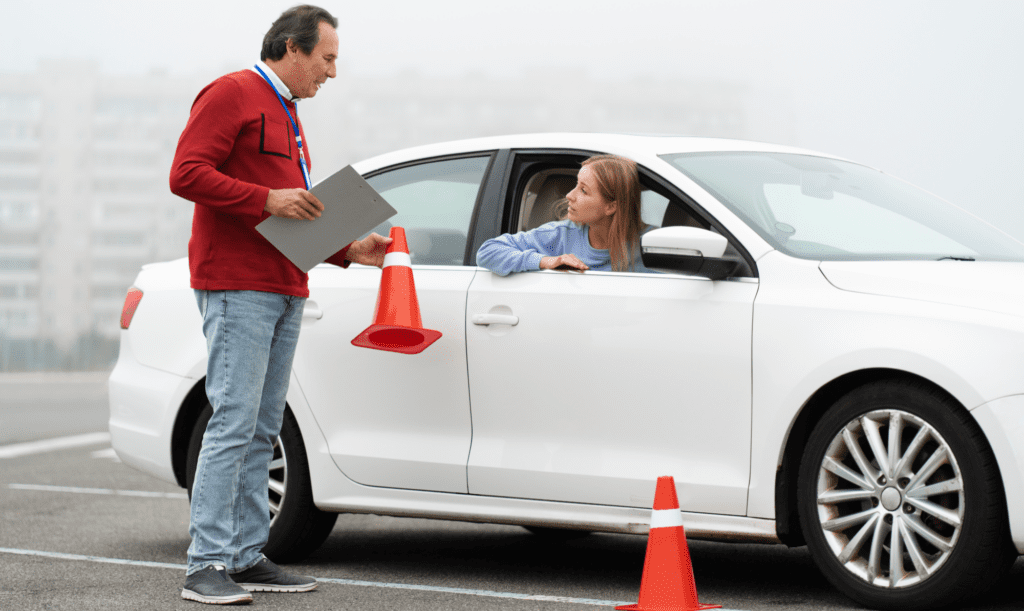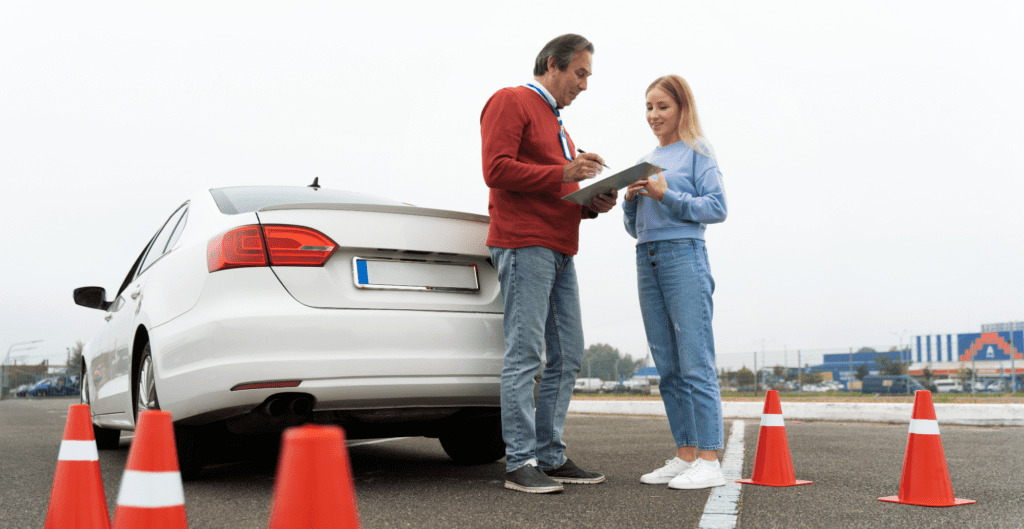
Taking your driving test can be a daunting experience, but with proper preparation and knowledge of what to expect, you can approach the day with confidence.
This article will guide you through each stage of the test day, from preparation to arriving at the test centre, to help you feel ready and poised for success.
Preparing for your Driving Test
Last-Minute Study and Practice Tips
In the final days before your driving test, focus on refining your driving skills and reinforcing your knowledge of the rules of the road. Here are some last-minute tips to help you sharpen your abilities:
- Review the Highway Code: Spend time going over the key regulations and signs that are likely to come up during the test.
- Practice on test routes: Familiarise yourself with the roads around the test centre. Many instructors are happy to cover these during lessons.
- Mock tests: Arrange for a full mock test with your instructor. This will help you get a feel for the timing and pressure of the actual test.
- Focus on weak spots: Identify any areas where you feel less confident and practice these manoeuvres more intensively.
- Relaxation techniques: If nerves are an issue, try techniques such as deep breathing or listening to calming music to ease your anxiety.
Preparing Your Documentation and Vehicle
Ensure that you have all the necessary documentation and that your vehicle is test-ready:
- Documentation: Check that you have your provisional licence and theory test pass certificate, as these are essential for taking the test.
- Vehicle requirements: The car you use must meet all legal requirements and be properly insured and taxed. It should be clean, have properly functioning lights, and be equipped with L-plates.
- Check your car: Perform a basic maintenance check on the car’s tyres, lights, and mirrors. Make sure that the windscreen wash is filled and that the car has enough fuel for the test.
Getting a Good Night’s Sleep
Rest is crucial before the day of your test. A good night’s sleep improves concentration and helps with nervousness.
Aim for at least 7-8 hours of quality sleep. Avoid caffeine and electronic devices an hour before bedtime to ensure that your sleep is restful.
Arriving at the Test Centre
What Time to Arrive
Arrive at the test centre at least 15 minutes before your appointment. This gives you ample time to calm any last-minute nerves and complete any necessary administrative tasks.
Understanding the Layout of the Test Centre
Familiarising yourself with the test centre can make a big difference in reducing stress. If possible, visit the test centre beforehand:
- Parking: Know where to park your car upon arrival.
- Entrance: Identify the main entrance and any other access points.
- Reception area: Locate where you will check in for your test.
- Waiting area: Find out where you can wait before your test begins, and where the toilets are.
Meeting Your Examiner
When meeting your examiner, it’s important to stay calm and courteous. Here are some tips:
- Greet your examiner politely when they call your name.
- Listen carefully to the examiner’s instructions and ask questions if anything is unclear.
- Stay composed: Keep your nerves under control and remember that the examiner is there to assess your ability to drive safely, not to trick you.
By understanding what to expect and how best to prepare for the day of your driving test, you can enhance your chances of success.
The Pre-Test Vehicle Safety Checks
What the Examiner Will Check
Before the test begins, your examiner will conduct a series of vehicle safety checks to ensure that the car is fit for the road and safe to drive. This includes:
- Documentation verification: The examiner will check if the vehicle’s insurance and MOT (if applicable) are up to date.
- Exterior checks: They will look at the condition of the tyres, including tread depth and any potential damage, and ensure that the L-plates are displayed correctly.
- Light checks: Operation of headlights, brake lights, and indicators will be tested to ensure they are functioning properly.
- Brake checks: The handbrake and footbrake must be in good working order.
Typical ‘Show Me, Tell Me’ Questions
During the test, candidates are required to answer two vehicle safety questions known as the ‘Show Me, Tell Me’ questions.
You will be asked to demonstrate a safety task, such as checking that the headlights and tail lights are working (‘show me’), and to explain how to ensure something like the brakes are working safely before starting a journey (‘tell me’).
How to Prepare for These Checks
To prepare for these checks, familiarise yourself with all the potential ‘Show Me, Tell Me’ questions provided by the DVLA, regularly perform these checks on your own vehicle, and understand why each check is important.
This knowledge not only helps you perform the tasks but also reinforces the safety practices crucial for everyday driving.
Overview of the Test Routes
What to Expect from the Route
The test route will take you through a variety of driving conditions and environments, including residential streets, main roads, and possibly dual carriageways.
You will navigate different traffic systems such as roundabouts, junctions, and crossroads, and encounter challenging areas like steep hills or narrow lanes.
Common Features of Test Routes
Test routes are designed to comprehensively assess your driving skills. You will handle intersections, both controlled and uncontrolled, to see how well you judge safe gaps.
Expect to perform reversing manoeuvres, such as parallel parking or reversing into a parking bay, and to adjust your speed according to varying speed limits throughout the route.
How Routes are Selected
Routes are selected by the test centre with an emphasis on geographical variety to test a candidate’s ability to drive under different conditions.
Safety is a paramount concern, with routes chosen to avoid overly hazardous conditions.
Furthermore, routes are often rotated or modified to prevent candidates from memorising them, ensuring that the test evaluates genuine driving ability rather than route familiarity.
By understanding these elements and preparing accordingly, you can approach your driving test with greater confidence and a clear sense of what to expect.
During the Driving Test
Key Skills and Behaviours the Examiner is Looking For
During the driving test, the examiner will be looking for a comprehensive demonstration of your driving ability, which includes a variety of key skills and behaviours.
These encompass effective use of mirrors, proper signal usage, correct road positioning, and the ability to make safe driving decisions.
The examiner will also assess your ability to anticipate and respond to various road conditions and the actions of other road users.
Common Mistakes to Avoid
Several common mistakes can jeopardize your chances of passing the driving test. These include failing to observe at junctions and mirrors before manoeuvres, speeding, inadequate or incorrect signalling, and not maintaining proper control of the vehicle during reversing tasks. It’s crucial to avoid these errors, as they can lead to serious safety concerns.
Managing Stress and Staying Calm
Managing stress and maintaining a calm demeanour are essential during the test. Techniques such as deep breathing, positive visualization, and maintaining a steady pace of driving can help manage nerves. It’s important to stay focused, keep a clear head and remember that it’s normal to be a bit nervous.
Completing the Test
What Happens in the Final Minutes
In the final minutes of the test, the examiner will direct you back to the test centre. This is a critical time to maintain focus and continue demonstrating safe driving practices as it’s easy to relax too soon.
Parking and Returning to the Test Centre
Upon returning to the test centre, you will be asked to perform a final parking manoeuvre. This could be a parallel park, parking in a bay, or pulling up on the right-hand side of the road.
The key here is to handle the vehicle smoothly and safely, showing that you can competently integrate back into the parking environment at the end of your journey.
Receiving Feedback from the Examiner
After the test concludes, the examiner will provide you with feedback on your performance. This includes discussing any errors or faults observed during the test, highlighting both strengths and areas for improvement.
Whether you pass or fail, this feedback is invaluable for your development as a safe driver.
After the Driving Test
Understanding Your Result
Once the driving test is completed, the examiner will inform you of your result. You will be told whether you have passed or failed, and the examiner will provide a detailed report of any driving faults made during the test.
A pass is awarded if you make no serious or dangerous faults and keep the number of minor faults below the allowed threshold.
Understanding the details of this feedback is crucial as it highlights both your competencies and the areas where further improvement is needed.
Next Steps After Passing
After passing the driving test, your next steps involve several important actions to consolidate your status as a new driver. Initially, you can apply for your full driving licence.
You might also consider enrolling in a Pass Plus scheme, which is a practical training course that takes at least six hours and is designed to help new drivers improve their skills and drive more safely.
It covers areas not extensively covered during regular driving lessons, such as motorway driving and driving at night.
Additionally, investing in a reliable vehicle and arranging appropriate car insurance are essential steps to becoming an independent driver.
How to Proceed If You Don’t Pass
If you don’t pass the driving test, it’s important to view this as an opportunity to improve rather than a setback. Review the examiner’s feedback carefully to understand where you need to improve.
It is advisable to discuss these points with your driving instructor and plan a series of lessons focused on these specific areas.
Once you feel confident in these areas, you can book another test. Remember, persistence is key, and many drivers do not pass on their first attempt but succeed through continued learning and practice.
Frequently asked questions
You must bring your provisional driving licence and your theory test pass certificate. If your test is in your own car, you should also bring proof of insurance and the car’s MOT certificate if applicable.
The driving test typically lasts about 40 minutes. This includes time for the eyesight check, ‘Show Me, Tell Me‘ questions, and the practical driving component.
Yes, you can take the test in your own car as long as it meets all the safety requirements set by the DVSA, including being taxed, insured, and having no warning lights showing, among other things.
These are vehicle safety questions that you will be asked at the beginning of your test. The ‘Show Me’ question requires you to demonstrate a safety check, and the ‘Tell Me’ question requires you to explain how you’d perform a check.
If you make a mistake, it’s important to stay calm. Not all mistakes will result in a fail; minor faults might not significantly affect your result. However, serious or dangerous faults will likely lead to a fail.
You are allowed up to 15 minor faults. However, accumulating more than 15, or committing any serious or dangerous faults, will result in a fail.
If you fail, review the examiner’s feedback to identify areas for improvement. Discuss these with your driving instructor and book more lessons focused on these skills before retaking the test.
While you cannot appeal against the decision itself, you can appeal if you believe the test was conducted improperly. However, if your appeal is successful, you will only get a free re-test rather than a direct pass.
You can take another driving test 10 working days after your previous attempt. This allows time to improve on any weaknesses identified during the test.
The Pass Plus scheme is an optional course aimed at new drivers. It offers additional training over six modules, including motorway and night driving, to improve skills and potentially reduce car insurance premiums.





